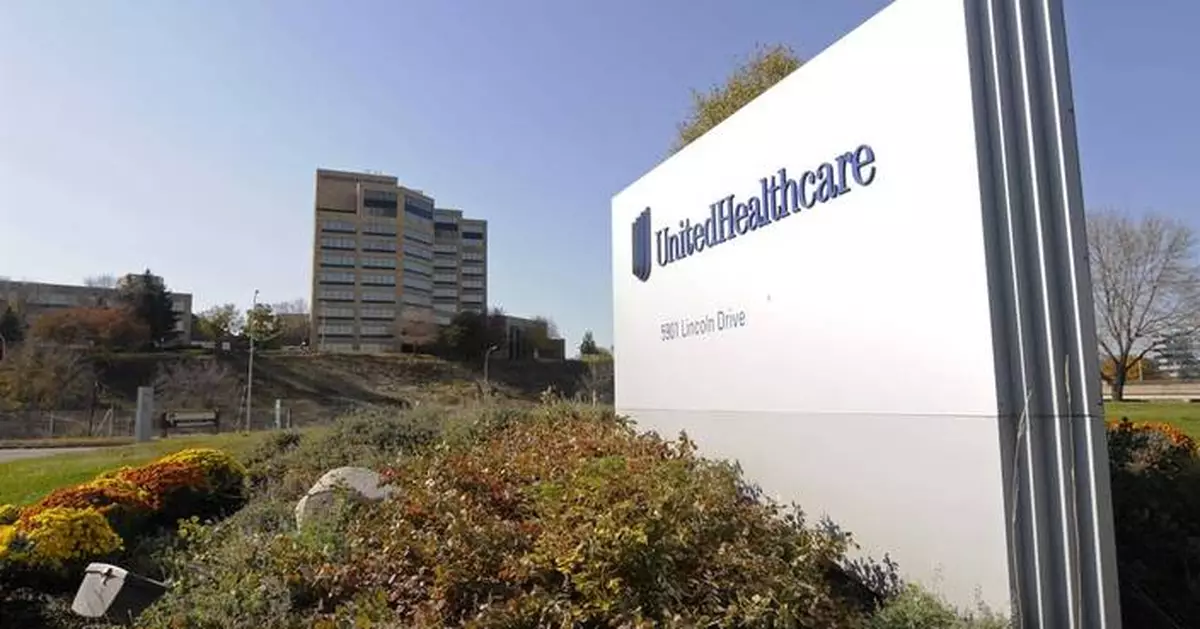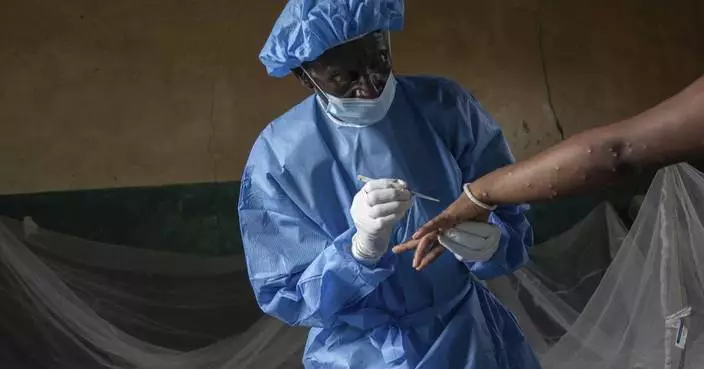UnitedHealth topped second-quarter forecasts but remains cautious about the year as it continues to eat costs from a massive cyberattack and deals with rising medical expenses.
The health care giant on Tuesday said it was sticking with an earnings forecast for 2024 it first laid out last fall that includes some costs from the attack earlier this year on its Change Healthcare business.
Hackers gained access in February to Change's system and unleashed a ransomware attack that encrypted and froze large parts of it. Change provides technology used to submit insurance claims, and the attack disrupted payments and claims processing around country.
UnitedHealth booked $1.1 billion in total costs from the cyberattack in the second quarter.
The company said it has restored most of the Change services affected by the attack. Estimated direct costs for its response to the attack have climbed as it started notifying customers who were affected and continued to provide financial support to care providers.
The company says it has provided more than $9 billion in advance funding and no-interest loans.
UnitedHealth provides health insurance for more than 49 million people in the United States. Its Optum segment also provides care, runs one of the nation’s largest pharmacy benefits management businesses and offers technology services.
In the second quarter, UnitedHealth’s net income slumped 23% to $4.22 billion. It reported adjusted earnings of $6.80 per share on $98.85 billion in total revenue.
Analysts expected earnings of $6.66 per share on $98.73 billion in revenue, according to FactSet.
Medical costs, the company's largest expense, climbed more than 8% to $65.46 billion in the quarter.
UnitedHealth’s U.S. medical enrollment climbed 3% in the quarter even as it lost nearly a million customers with Medicaid coverage over the past year. Enrollment in the government-funded program for people with low incomes has fallen nationally as states redetermine eligibility after a pause during the COVID-19 pandemic.
Company executives told analysts on Tuesday that they expect Medicaid enrollment to stabilize in the year's second half.
For the full year, UnitedHealth said it still projects adjusted earnings between $27.50 and $28 per share. UnitedHealth typically raises its initial forecast at least once this far into the year.
That outlook includes estimated business disruption costs like lost revenue of between 60 cents and 70 cents per share from the cyberattack.
UnitedHealth Group Inc. stock climbed more than 5% to $543.49 Tuesday while the Dow Jones Industrial Average climbed about 1%. UnitedHealth is a Dow component.
Shares of the Minnetonka, Minnesota, company had slipped 2% so far this year as of Monday. The Dow had climbed nearly 7%.
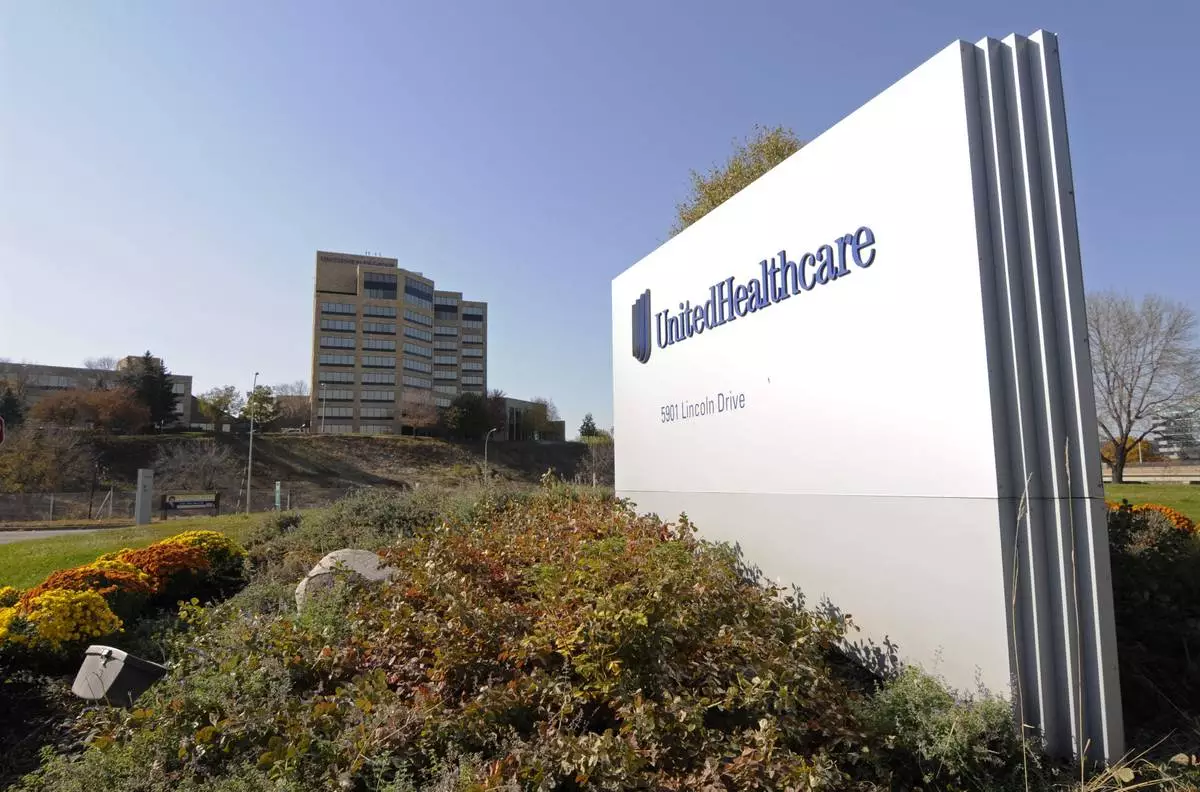
FILE - A sign stands on UnitedHealth Group Inc.'s campus in Minnetonka, Minn., Oct. 16, 2012. UnitedHealth Group topped second-quarter expectations but stayed cautious on its outlook for the year as it continued to eat costs from a massive cyberattack to its Change Healthcare business. The health care giant said Tuesday, July 16, 2024, it still expects adjusted earnings to fall between $27.50 and $28 in 2024, an outlook it first predicted last fall. (AP Photo/Jim Mone, File)
Asian markets forged higher on Thursday after the Federal Reserve kicked off its efforts to prevent a recession in the U.S. with a bigger-than-usual cut to interest rates.
In Tokyo, the Nikkei 225 index jumped 2.1% to 37,155.33, lifted by major export manufacturers' shares. Toyota Motor Corp. jumped 5.1%, Sony Group Corp. added 2.9% and Hitachi Ltd. advanced 5.8%.
Hong Kong's Hang Seng gained 1.9% to 17,993.30.
The Shanghai Composite index climbed 0.7% to 2,736.51, while Taiwan's Taiex was up 1.7%.
South Korea's Kospi rose 0.2% to 2,579.86.
The Bank of Japan and the Bank of England are also holding monetary policy meetings this week. Neither central bank is expected to move on rates, though the language of what the officials say could be an indicator of later moves and still influence markets.
Because the Fed's half-percentage point rate cut was so well telegraphed, markets had already climbed in anticipation. So, Wall Street’s reactions to the 180-degree turn on its policy rate were relatively muted.
“Markets barely reacted to the Fed’s 50 (basis point) rate cut, on balance, and our base case is that further cuts won’t move the needle too much either,” Thomas Mathews of Capital Economics said in a commentary.
It was the first cut to the federal funds rate in over four years, ending a stretch where the Fed kept rates at a two-decade high to slow the U.S. economy enough to stifle the worst inflation in generations.
On Wednesday, the S&P 500 slipped 0.3%, closing at 5,618.26. The Dow Jones Industrial Average dipped 0.2% to 41,503.10. The Nasdaq composite lost 0.3% to 17,573.30.
The Fed's move can help financial markets in two big ways. It eases the brakes off the economy, which has been slowing under the weight of higher rates, and it gives a boost to prices for all kinds of investments. Besides stocks, gold and bond prices had already rallied in recent months on expectations that rate cuts were coming.
Now that inflation has eased significantly from its peak two summers ago and appears to be heading toward 2%, the Fed says it it can turn more of its attention toward protecting the slowing job market and overall economy.
“The time to support the labor market is when it’s strong and not when you begin to see the layoffs,” Fed Chair Jerome Powell said. “That’s the situation we’re in.”
Some critics say the Federal Reserve may have already kept interest rates too high for too long, but Powell said that “We don’t think we’re behind.”
“We think this is timely. But I think you can take this as a sign of our commitment not to get behind,” Powell said in a press conference following the Fed’s announcement.”
“The focus has now decisively shifted to the labor market, and there’s a sense that the Fed is trying to strike a better balance between jobs and inflation,” Stephen Innes of SPI Asset Management
Like stock prices, Treasury yields wavered up and down repeatedly immediately after the Fed announced its cut and published its projections.
Trading in Tupperware Brands remained halted after the company filed for Chapter 11 bankruptcy protection. Its stock has been sinking, down to 51 cents, since a mini-revival early in the pandemic sent its stock above $30.
All told, the S&P 500 slipped 16.32 points to 5,618.26. The Dow dropped 103.08 to 41,503.10, and the Nasdaq composite lost 54.76 to 17,573.30.
In other dealings, U.S. benchmark crude oil lost 20 cents to $69.68 per barrel in electronic trading on the New York Mercantile Exchange.
Brent crude, the international standard, declined 22 cents to $73.43 per barrel.
The dollar rose to 142.58 Japanese yen from 142.29 yen. The euro rose to $1.1132 from $1.1120.
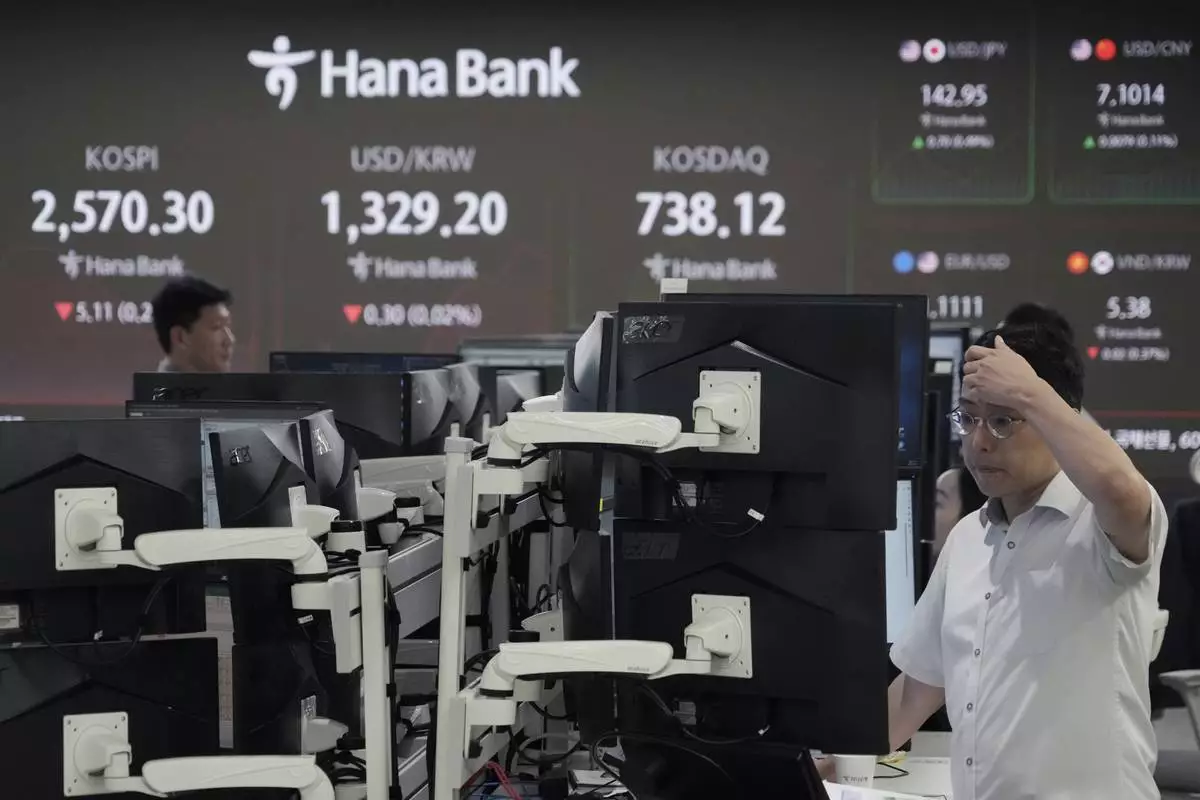
Currency traders watch monitors at the foreign exchange dealing room of the KEB Hana Bank headquarters in Seoul, South Korea, Thursday, Sept. 19, 2024. (AP Photo/Ahn Young-joon)
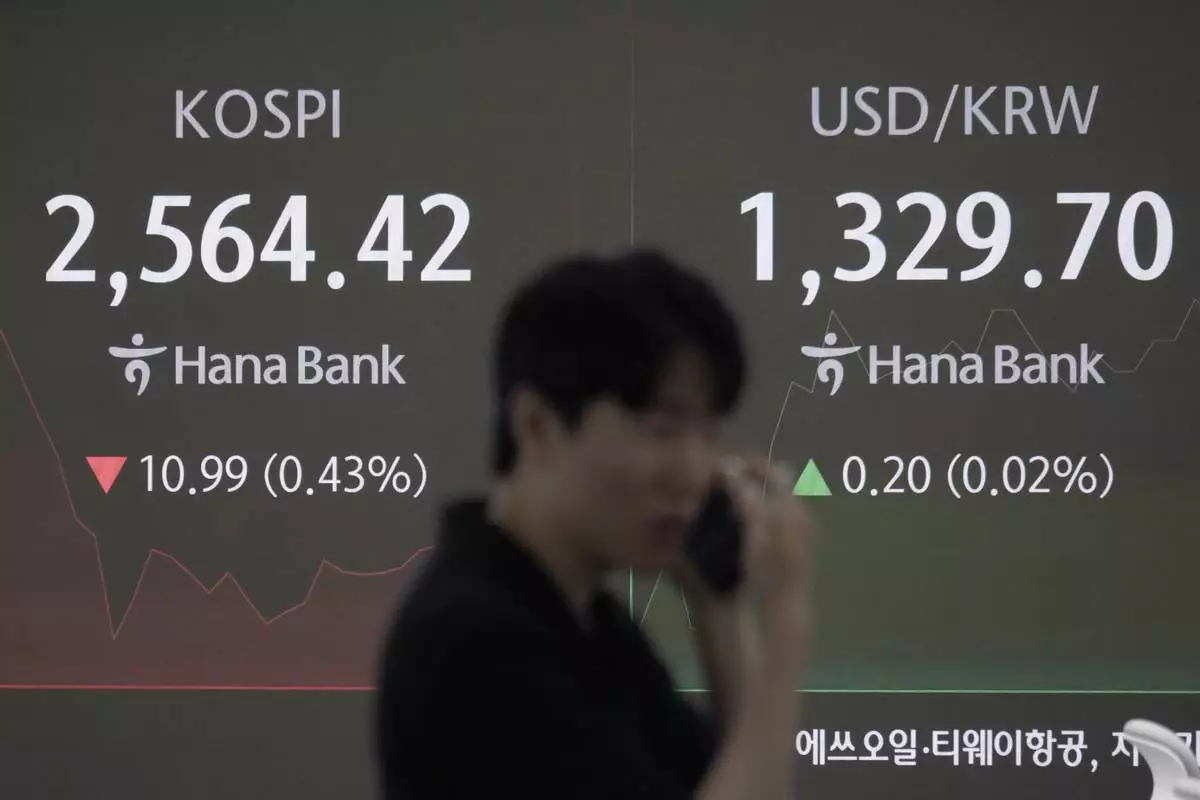
A currency trader talks on the phone near a screen showing the Korea Composite Stock Price Index (KOSPI), left, and the foreign exchange rate between U.S. dollar and South Korean won at the foreign exchange dealing room of the KEB Hana Bank headquarters in Seoul, South Korea, Thursday, Sept. 19, 2024. (AP Photo/Ahn Young-joon)
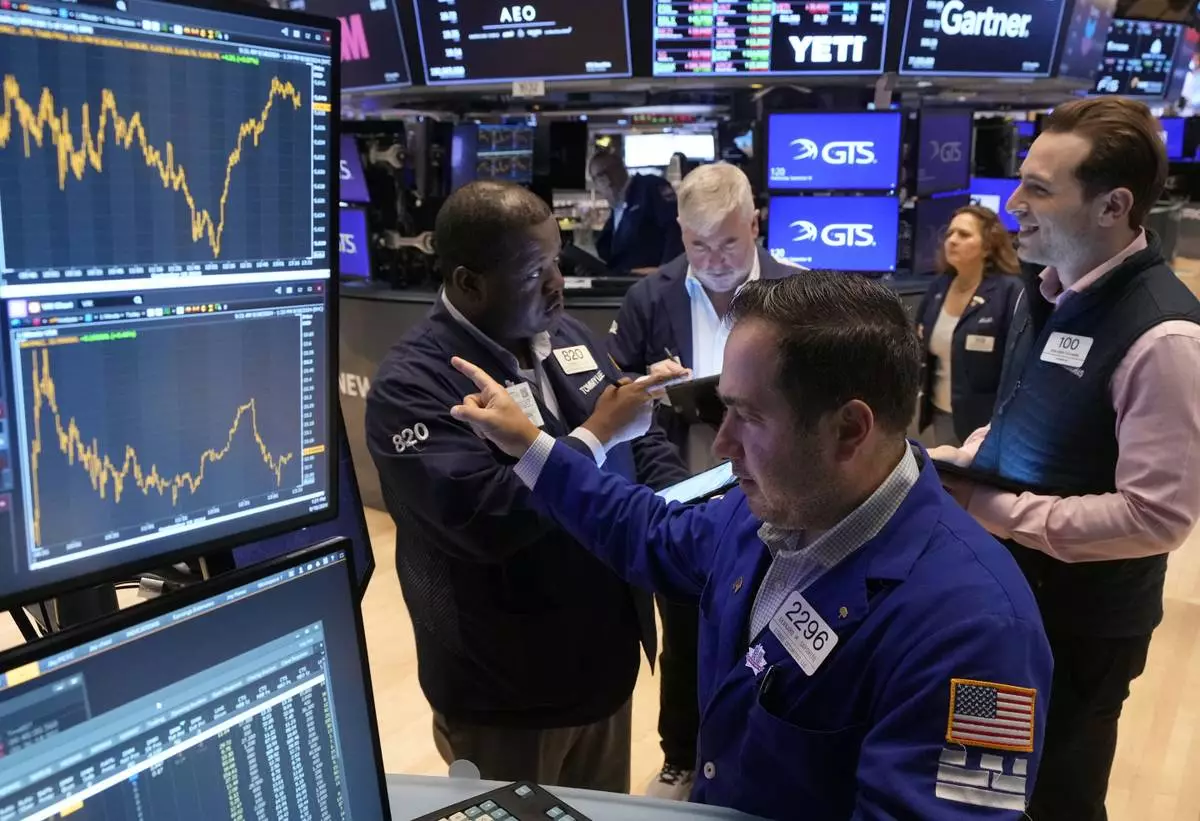
Specialist Genaro Saporito, foreground, works with traders at his post on the floor of the New York Stock Exchange, Wednesday, Sept. 18, 2024. (AP Photo/Richard Drew)
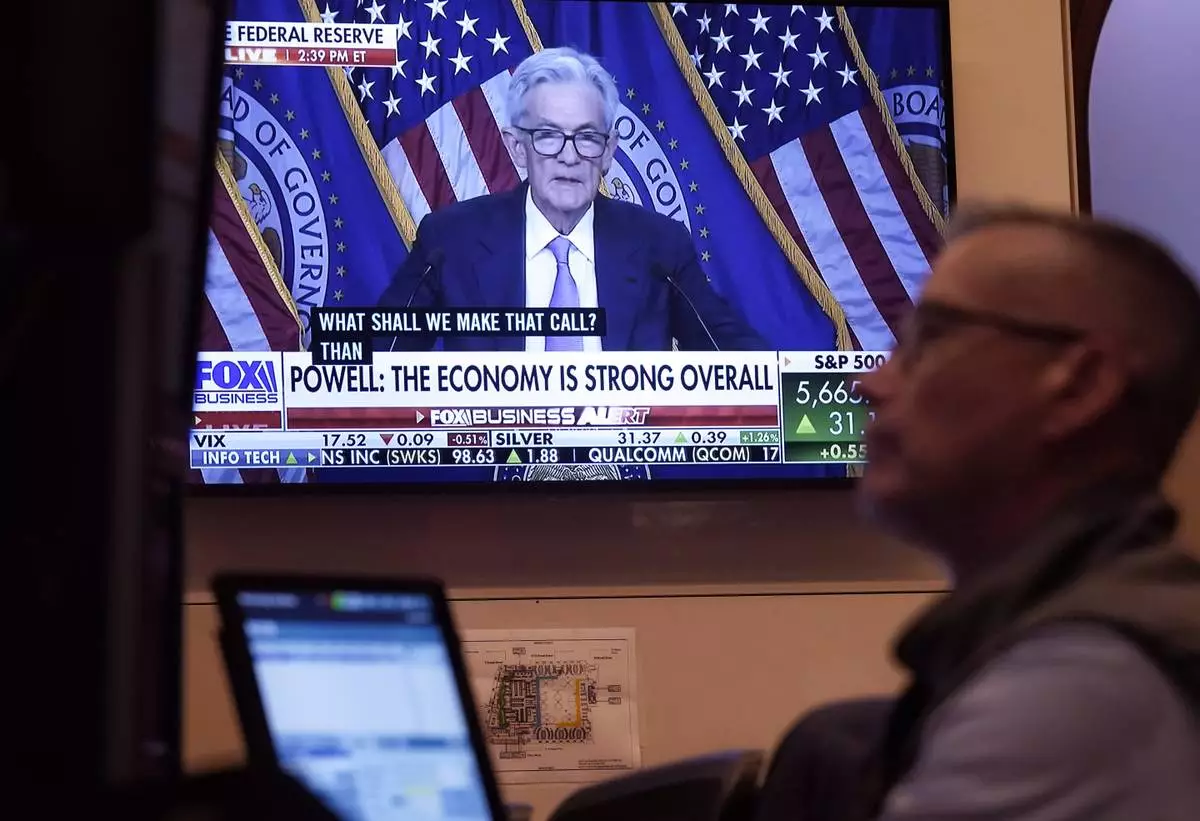
The news conference of Federal' Reserve Chair Jerome Powell appears on a screen as trader Neil Catania works on the floor of the New York Stock Exchange, Wednesday, Sept. 18, 2024. (AP Photo/Richard Drew)
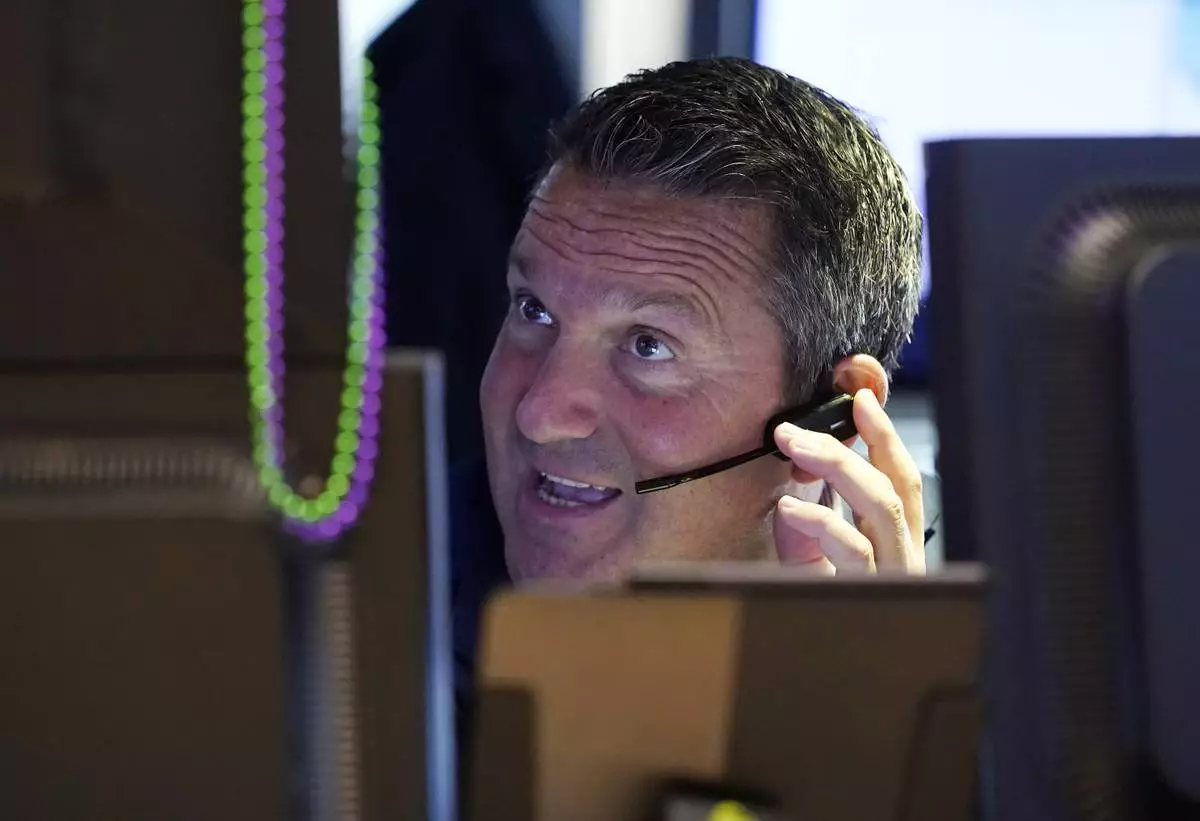
Trader Leon Montana works on the floor of the New York Stock Exchange, Wednesday, Sept. 18, 2024. (AP Photo/Richard Drew)

Currency traders work near a screen showing the Korea Composite Stock Price Index (KOSPI), top left, and the foreign exchange rate between U.S. dollar and South Korean won, top center, at the foreign exchange dealing room of the KEB Hana Bank headquarters in Seoul, South Korea, Thursday, Sept. 19, 2024. (AP Photo/Ahn Young-joon)



